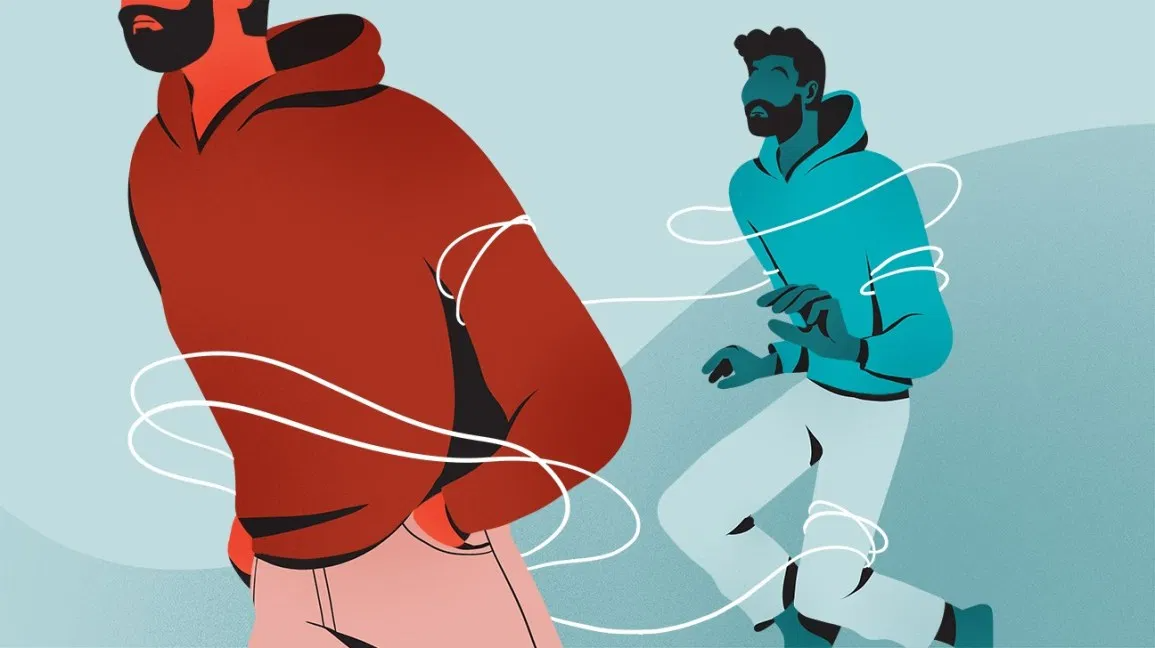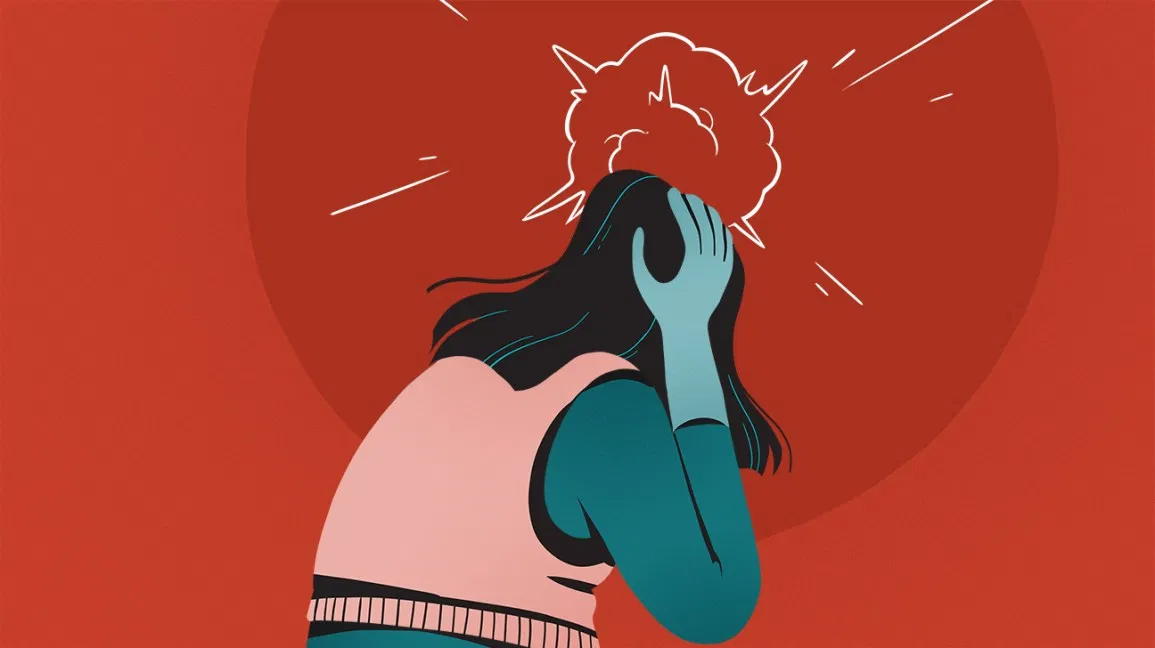4 Illustrations of What Anxiety Really Feels Like

4 Illustrations of What Anxiety Really Feels Like
“Chronic anxiety is messy and unpredictable, overpowering and insidious, physical and mental, and at times so unexpectedly debilitating I’m unable to speak or think clearly or even move.”
For people living with chronic anxiety, it can be difficult to describe to others what it actually feels like.
Many people I’ve spoken with think anxiety is a state of worrying or being stressed out about something, like a school exam, relationship problem, or a major life change like switching careers or moving to a new city.
They think it’s a feeling of worry with a direct root cause — and if you fix the root cause, you won’t feel anxious anymore.
This isn’t what chronic anxiety feels like to me. I wish it was that simple and neat.
Chronic anxiety is messy and unpredictable, overpowering and insidious, physical and mental, and at times so unexpectedly debilitating I’m unable to speak or think clearly or even move.
But even those words don’t describe exactly what I’m trying to say. I’ve turned to visual language to help illustrate what I mean, when words aren’t quite enough.
Here are 4 illustrations that show what anxiety really feels like.
Like a knife stabbing you in the chest with each breath you take
This might sound like an exaggeration, but anxiety can manifest itself with intense physical symptoms, like sharp chest pains.
It’s the most intense chest pain I’ve ever felt. With each breath I take, it feels like the sharp point of a blade is being pressed against the inside of my chest. Sometimes it lasts for minutes — sometimes it lasts for hours or even days.
Other physical symptoms I’ve experienced include a pounding heart, sweaty palms, and a persistent tightness in my shoulders.
At first I thought the tightness was related to sitting at a desk and typing all day. But I eventually realized the tightness would come and go depending on how anxious I was feeling.
I’ve even had a full-on anxiety-induced panic attack that had me completely convinced I was having a heart attack. It culminated in an ambulance ride to the ER and a tightness in my forearms that caused an intense feeling of pins and needles, which lasted for 2 hours until I finally calmed down.
None of this sounds like merely worrying about something, does it?
Like a rain cloud of negative speak following your every move
One of anxiety’s defining characteristics for me is self-judgment. A harsh, loud, stubborn voice spewing an endless stream of negativity. When my mind gets caught in this loop, it’s tough to break out of it. Really tough.
It can hit me so strongly and unexpectedly that I feel trapped under its weight.
I know what you’re thinking: turn your thoughts to something positive and you’ll be all right. I’ve tried, believe me. It simply doesn’t work for me.
There are a few things that, after a lot of practice and patience, have helped me break out of this cycle, though.
The first step is recognizing that negative speak is even happening. Because when you get caught in these loops for days on end, you can forget it’s even there.
Then I set aside some time to focus in on my thoughts and feelings without distractions. Deep breathing techniques — like the 4-7-8 — help to quiet the negative thoughts to a point where I can come up for air and think about what’s really going on.
Another technique that helps is journaling. Just getting my thoughts — negative or otherwise — onto the page is a form of release, which can help break the cycle.
I once sat down and filled two entire pages of my journal with adjectives describing how much I hate myself. Depression, anxiety’s trusty sidekick, was certainly around for that occasion, soaking in the hatred. It wasn’t fun, but it was a much needed release.
While positive thinking hasn’t worked for me, positive reality-based thinking has.
Think of the difference this way: Positive thinking might turn my thoughts to abstract ideas like being happy and feeling joyful and having an imaginary thing like falling in love happen to me; positive reality-based thinking turns my thoughts to tangible things I’ve recently experienced, like the thoughtful birthday gift my brother gave me, the feeling of satisfaction I get from my career, and the song I wrote over the weekend.
Like an impostor hijacked your normal self

When I’m feeling anxious, I often feel my normal self has been replaced by a crafty impostor. Someone who looks just you, but acts like someone else entirely — mostly, a lot of blank stares and fidgeting and not much interesting to say.
Where did I go? I ask myself in these moments.
It has an out-of-body quality to it. I’m watching the impostor from the outside, powerless to fight him off and show everyone the real me.
Anxiety has decided to throw a party, and the impostor was the only person invited. How rude, my normal self thinks.
There’s a frustrating powerlessness in the moments, where no matter how hard I try, I just can’t summon me.
I know when this happens, my anxiety has kicked into full-blown attack mode and I need to give myself space and time to gather my thoughts and dip into my tool bag — deep breathing, grounding techniques, journaling, therapy, exercise, sleep hygiene, and eating well.
If I have the energy, I also make an effort to talk with people I trust, or hang out with a close friend and let their stories and problems occupy my mind for a moment.
Eventually, my normal self always reappears, shoving the impostor out of sight. At least for a while, anyway.
Like an explosion in your brain, sending your thoughts spiraling out of control

I was tempted to describe anxiety as a brain fog that clouds my thoughts, but an explosion in the brain seemed more accurate to me.
Anxiety can strike my brain with such force that it smashes my thoughts into scattered bits of shrapnel flying off in all directions. What’s left is a void, a crater of emptiness.
Have you ever interacted with someone you thought could be in the middle of an anxiety attack, and noticed a blank look in their eyes, or a general lack of responsiveness? I’m willing to bet they’d love to give you a proper reply to your question, but in that moment their mind is a crater with nothing to give.
Thoughts can feel so out of reach that I avoid social interactions entirely, to spare others from having to interact with the emptiness of my anxiety brain. Sometimes I get really frustrated by this. But the more I struggle against it, the more frozen my thoughts become.
So how do I unfreeze myself? There’s no easy answer, unfortunately. It’s a matter of time, patience, and giving myself space to unwind and reflect and get back to a base level of control over my mind and body.
Having my anxiety tool bag handy, a therapist who can give me perspective on my thoughts, and a few trusted people to talk with all help me regain that control.
Closing reflection
I hope these illustrations have given you more insight into what life with chronic anxiety really feels like. It’s much different than being a little worried about something. At times, it’s paralyzing.
My hope is that with more understanding of what’s really going on, people might begin to have a little more empathy for others living with chronic anxiety. Even if it’s uncomfortable to interact with them.
Remember that people who live with chronic anxiety don’t necessarily have some fatal flaw they’re ignoring or some hidden desire to make everyone around them uncomfortable. They can be normal people like you and me who are going through something they don’t understand, something that caught them off guard, something deep in their subconscious that they need help unpacking.
A little empathy and support can go a long way.